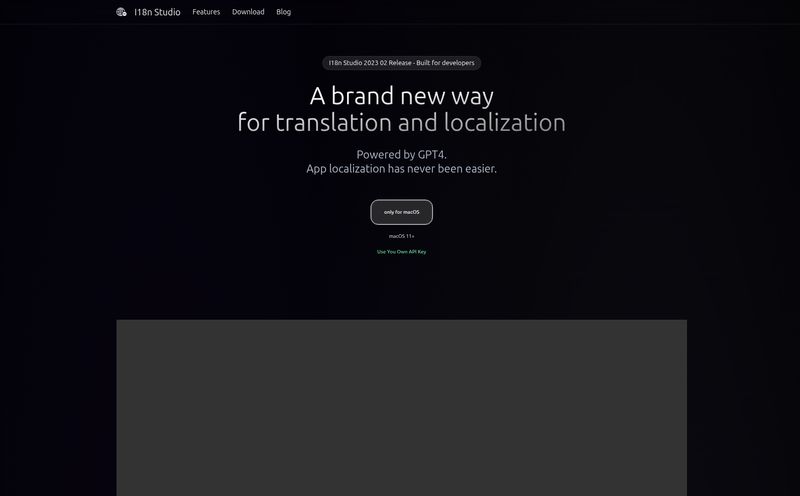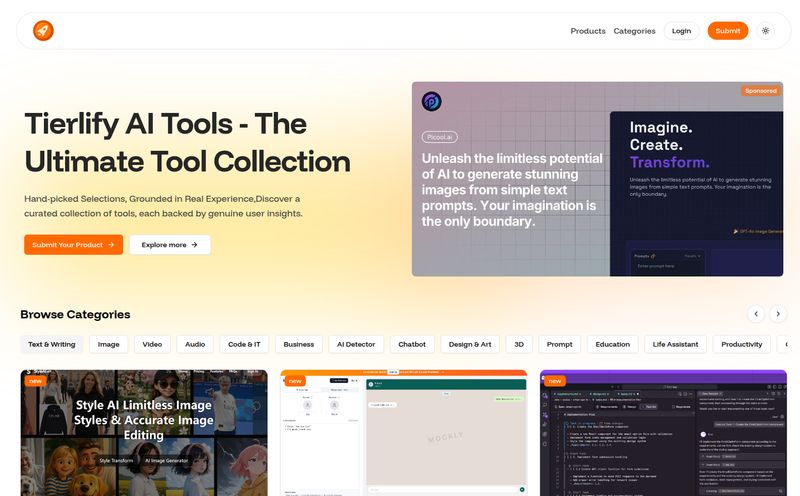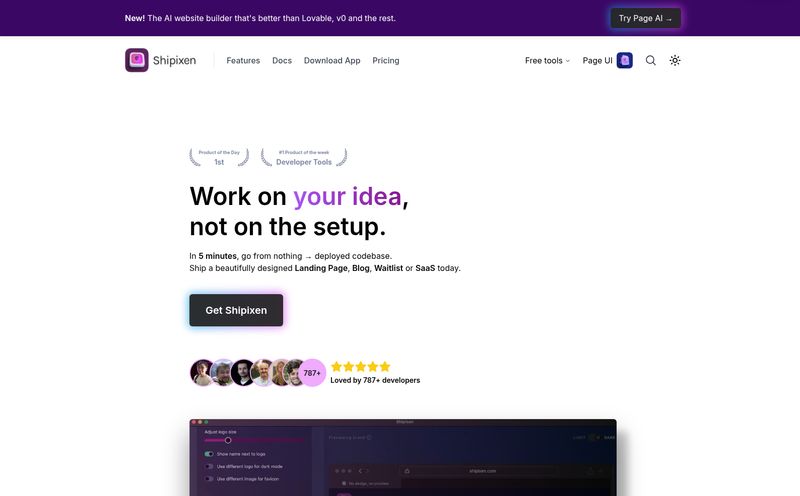I’ve been in this SEO and traffic game for a long time. And you know what scares me more than a Google core update? A security breach. I still get a cold sweat thinking about a launch I was part of years ago. It was 3 AM, the site was supposed to go live in a few hours, and someone on the team suddenly asked, “Did anyone… uh… run a security scan on that new payment plugin?”
The silence was deafening. We’ve all been there. That horrible friction between the need to ship fast and the need to ship securely. For decades, security has been this gatekeeper at the very end of the development process. A hurdle to overcome. But the whole “Shift Left” movement has been trying to change that, and I think we’re finally seeing tools that actually get it. Tools that don’t just flag problems but help you fix them, right where you work. That’s the promise of platforms like CybeDefend, and I have to say, I'm intrigued.
What Exactly is CybeDefend?
So, what’s the big deal? In simple terms, CybeDefend is an AI-powered security guard that watches over your shoulder while you code. It's an AST—Application Security Testing—platform, but that sounds so corporate and boring. Let’s break it down into something that makes sense.
Think of it like a suite of expert proofreaders for your entire project:
- SAST (Static Application Security Testing): This is the proofreader for the code you write yourself. It scans your source code for common security blunders, like SQL injection vulnerabilities or hardcoded secrets, before you even run the program. It’s like a grammar checker, but for security bugs.
- SCA (Software Composition Analysis): This is the expert that checks your sources. Modern apps are built on a mountain of open-source libraries and packages. SCA checks all those third-party ingredients for known vulnerabilities. You wouldn’t build a house with faulty bricks, right?
- IaC (Infrastructure as Code) Security: This one checks your blueprints. If you’re using tools like Terraform or CloudFormation to define your cloud infrastructure, IaC security scanning makes sure you haven’t accidentally left a digital window wide open in your configuration files.
CybeDefend bundles all three of these into one platform, and then sprinkles a healthy dose of AI on top to not just find the problems, but to help you fix them. And that’s the part that gets my attention.

Visit CybeDefend
The Core Features That Actually Matter
Any tool can throw a bunch of alerts at you. I've used scanners that generate a 200-page PDF of “potential issues” that nobody has the time to read, let alone fix. That’s not helpful; it's just noise. CybeDefend seems to be aiming for something different, focusing on features that solve real pain points.
The "AI-Powered Security Champion" Idea
This isn't just marketing fluff. The platform’s main selling point is its “Automated Remediation.” Instead of just saying, “Hey, you have a Cross-Site Scripting vulnerability on line 52,” it says, “Hey, you have this vulnerability, and here’s the exact code change to fix it. Want me to create a pull request for you?” Now that is useful. It turns the tool from a nagging critic into a helpful pair-programmer. For a busy devleoper, this is gold.
Real-Time Feedback is a Game Changer
The old way was to write code for two weeks, merge it, and then have a security team run a scan that brings everything to a grinding halt. It’s inefficient and creates a culture of blame. CybeDefend provides feedback in real-time, right inside the developer's workflow. Finding and fixing a bug when the code is fresh in your mind takes minutes. Finding and fixing it two weeks later can take hours, or even days. This isn't just about security, it's about pure development velocity.
A Unified View of Your Security Posture
Having SAST, SCA, and IaC in one place is more powerful than it sounds. It allows for what the platform calls “cross-analysis.” A low-risk vulnerability in a library (SCA) might suddenly become a critical-risk issue when the platform sees that your infrastructure code (IaC) exposes that part of the application to the public internet. Separate tools can't connect those dots. A unified platform can, giving you a much smarter way to prioritize what needs fixing first.
Who is CybeDefend Really For?
CybeDefend does a good job of showing how it fits different roles, which I appreciate. A tool that only serves one master usually fails in a team environment.
- For the Developer: It’s a safety net. A partner that helps you write better, more secure code from the start without slowing you down. Less time fixing bugs, more time building cool stuff.
- For the AppSec Specialist: It’s a force multiplier. It automates the 80% of routine scanning and triaging, freeing you up to focus on the truly complex 20%—like threat modeling and advanced penetration testing.
- For the DevOps Engineer: It’s security that fits in the pipeline, not on it. By catching issues early, it means fewer broken builds and less drama in the deployment process. Security becomes just another quality check, like unit tests.
- For the CISO: It offers a tangible way to reduce risk and demonstrate compliance, all while enabling the business to move faster. It’s a rare win-win for security and speed.
Let's Talk Turkey: CybeDefend Pricing
Alright, this is where things get a bit… opaque. Pricing is always a huge factor, and CybeDefend uses a tiered model that’s pretty standard for SaaS. I’ve laid it out in a table for clarity.
| Plan | Price | Ideal User |
|---|---|---|
| Free | $0 | Good for individuals or teams testing the core features on a small scale. |
| Starter | $/month | Aimed at individual developers who need more robust features. |
| Professional | $/month | Built for tech teams of up to 15 users needing deeper integration. |
| Enterprise | On-demand | For large organizations that need full automation, support, and customization. |
Now, let's address the elephant in the room: the `$`/month` for the Starter and Professional plans. In my experience, this usually means the price isn't a simple flat fee and they want you to get in touch for a quote. I’m not a huge fan of this for what seem like standard tiers—I prefer transparent pricing. However, it's a common B2B tactic. It likely allows them to tailor packages and avoids sticker shock. Still, it’s a hurdle. The good news is the Free plan seems generous enough to let you properly kick the tires before you have to talk to sales.
The Good, The Bad, and The "Coming Soon"
No tool is perfect. After looking through everything, here’s my honest breakdown.
What I Liked
The AI-powered automated fixes are the standout feature. This is what separates a modern DevSecOps tool from a legacy scanner. The real-time feedback loop and the combination of SAST, SCA, and IaC in one dashboard are also huge wins. It’s a thoughtfully designed platform that understands the developer workflow. It’s built for speed, not for obstruction.
Points to Consider
The pricing ambiguity is a definite consideration. And while the Free plan is great for a trial, its limitations on scans and support mean you'll need to upgrade for any serious, continuous use. There are also a few features listed as “Coming soon...”, which is both exciting and a little frustrating. It’s great that they’re innovating, but you're buying the tool as it is today, not what it might be tomorrow. I always advise people to make decisions based on current features not future promises.
My Final Take
So, is CybeDefend the real deal? From what I can see, yes, it’s heading in exactly the right direction. It’s tackling the biggest problem in application security: the gap between developers and security requirements. It’s not just another tool that yells at you; it’s a platform designed to help you.
It’s like having a senior developer who’s also a security fanatic, available 24/7 to review every line of code and offer helpful suggestions. While some parts are still maturing and the pricing could be clearer, the core concept is incredibly strong. It embraces AI not as a gimmick, but as a genuine way to make developers' lives easier and applications safer.
If you’re a team that feels like security is a bottleneck, you owe it to yourself to give the free plan a shot. It might just be the AI co-pilot you've been waiting for.
Frequently Asked Questions about CybeDefend
- Is CybeDefend just another SAST tool?
- No, it's more comprehensive. It combines SAST (your code), SCA (open-source dependencies), and IaC (infrastructure code) security into a single platform. The key differentiator is the AI-powered remediation that suggests fixes automatically.
- Can CybeDefend replace my security team?
- Absolutely not. It’s a tool designed to empower your developers and make your security specialists more efficient. It automates the repetitive, time-consuming tasks, allowing your security experts to focus on higher-level threats and strategy. Think of it as augmenting your team, not replacing it.
- How does the AI-powered remediation actually work?
- When CybeDefend detects a vulnerability, its AI analyzes the context of the code and generates a specific, ready-to-use code snippet to fix the issue. This suggestion can then be reviewed by the developer and applied with a single click, often directly within their development tools.
- Is the free plan good enough to get started?
- Yes, for a trial. The free plan is designed to let you test the core functionality on a single application or a small project. You'll get a real feel for the workflow and the AI suggestions. For continuous protection across multiple projects or for team use, you’ll need to look at the paid plans.
- What kind of integrations does CybeDefend offer?
- The platform is built to integrate directly into the developer workflow. This typically means plugins for popular IDEs (like VS Code), integration with source control management systems (like GitHub or GitLab), and hooks into CI/CD pipelines (like Jenkins or GitHub Actions) to automate scans on every commit or build.
- Why isn't the pricing for the Starter and Professional plans public?
- This is a common strategy in B2B SaaS. It often indicates that pricing may depend on specific factors like the number of users, scan frequency, or support level. It encourages potential customers to contact the sales team for a tailored quote that fits their exact needs.
Conclusion
The world of software development isn't slowing down, and security can't afford to be an anchor. The future is automated, AI-assisted, and developer-centric. Tools like CybeDefend are not just a nice-to-have; they’re becoming a fundamental part of a modern, efficient, and secure software development lifecycle. The approach is smart, the technology is promising, and the value proposition is clear. Don't just take my word for it—the best way to see the future is to try it out yourself.
Reference and Sources
- CybeDefend Official Website
- CybeDefend Pricing Page
- What is Shift-Left? - An excellent overview from Red Hat on the core concept.
- Cost of a Data Breach Report 2023 - IBM's annual report highlighting the financial impact of security incidents.



